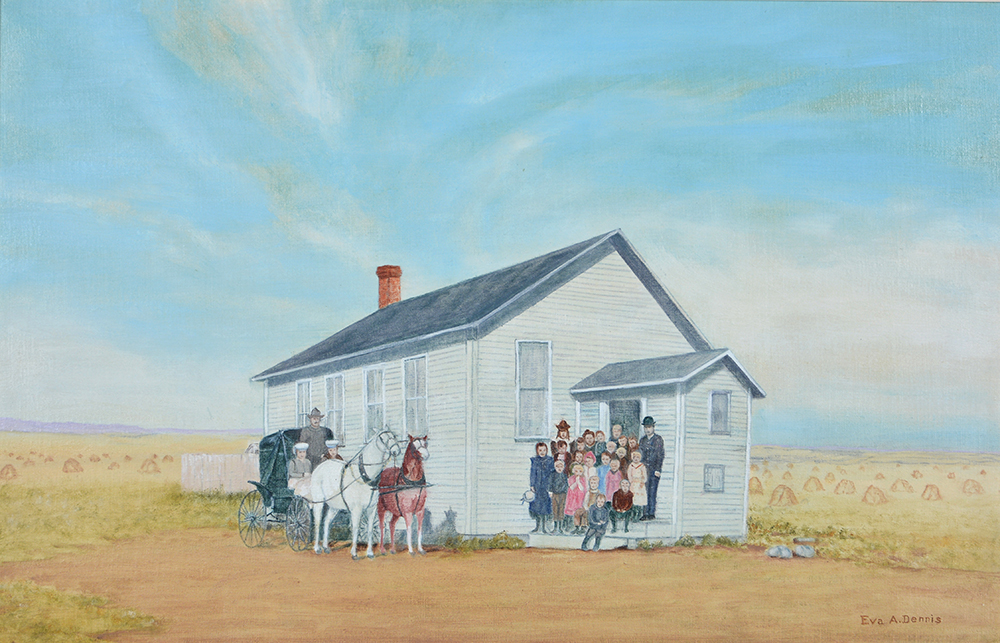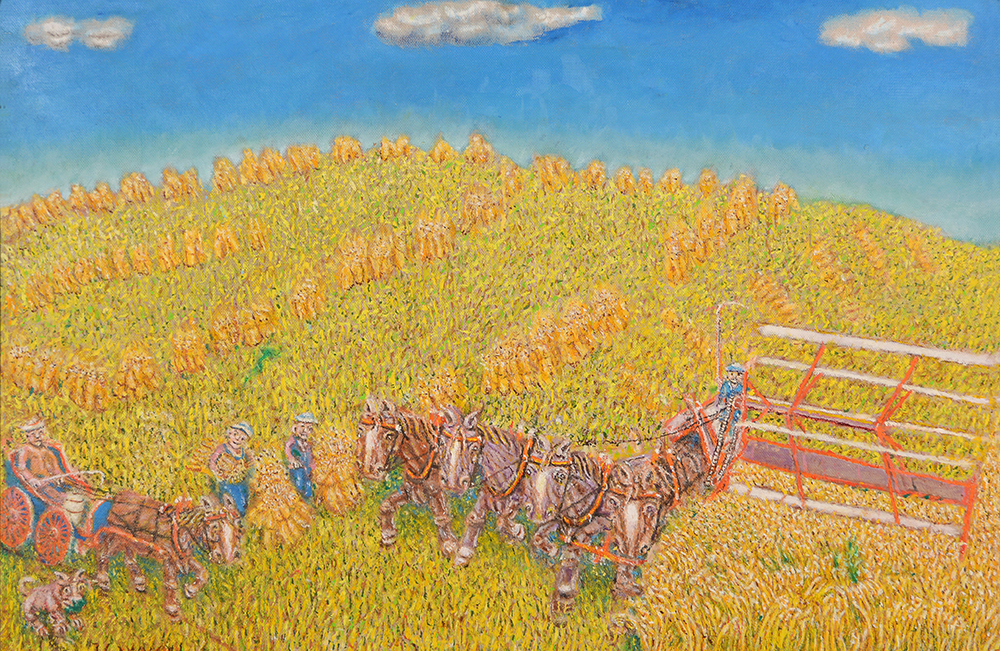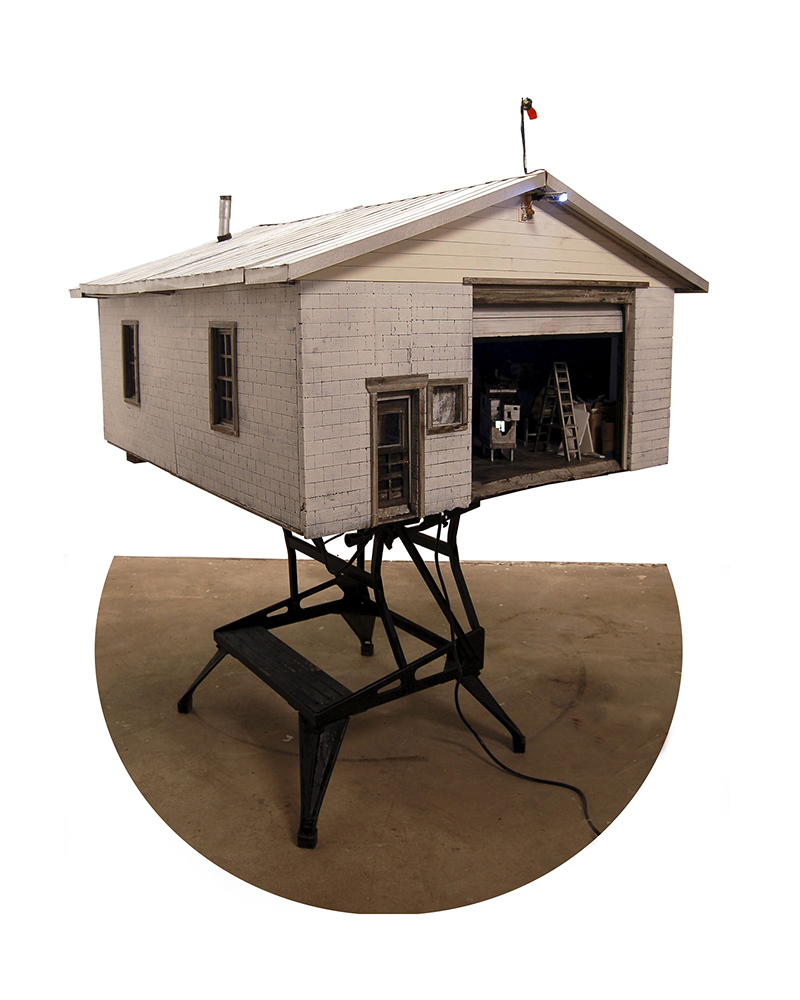Memory and Memoria
Many vernacular artists make work based on their memory of past events. Positive or negative, direct or indirect, artists will incorporate past experiences into the work. Sometimes the content is more documentary, other times more expressive or otherwise adapted. For many, the goal is to preserve and tell meaningful stories.
Eva Dennis was a painter from Moose Jaw, SK. She taught in rural one-room schools for 38 years. She married farmer Wesley Dennis, and they both initially began painting around 1950 and worked on it in earnest upon retirement. Both artists painted their memories of pioneer history.
Eva treated her work as a painted memoir. While Wesley’s work was a more romanticized pioneer history, Eva’s was highly documentary, showing the complexity of pioneer life. She painted detailed memories of specific stories of her time working at the rural schools. She could name every person and event pictured.
Vernacular artists also make work based in “memoria”. Work that is based not on their memory of experiences, but of stories, histories, and imagined versions of events. This can also include scenes that are broadened in space, time, viewing angle, etc. to include more expansive information than would normally be visible.
Jan Wyers was a painter from Windthorst, SK. He immigrated to the US from the Netherlands, worked on threshing teams, and eventually settled in Saskatchewan. When he could not farm, (winter, illness, etc.) he would paint. Contemporary artists and curators liked his work and included him in major national exhibitions.
His colourful untitled work, shown in this exhibition, is an example of the imaginatively broadened view. The image takes a wide viewing angle of the field and its inhabitants. This allows him to show multiple people, machines, and steps of the work in a single image, full of activity.
In trying to tell a specifically memorable story, these artists are highly attentive to detail. They will often include as much content as possible in the work. Whether documenting broad views of what was happening, or evoking feelings about the memory, visually intricate works are a key method.
Graeme Patterson is a multidisciplinary artist, originally from Saskatoon. He graduated from NSCAD and returned to the family homestead in Woodrow, SK, where he spent summers and holidays as a child with his grandparents.
There, he created Woodrow, an installation of miniature versions of Woodrow’s real buildings, and a stop-motion animation of characters exploring the buildings and the “ghosts” of their stories. The Shop is one of these models, his grandfather’s workshop, containing tiny versions of the sculptures in progress. While it is specific to his memories, it is also general enough to engage viewers’ own memories of rural life.
Memory-based works range from sweet nostalgia, to informative documentation, to cold representation of harsh reality. They provide viewers with not only a glimpse of the story, but of how it is interpreted by the one remembering it. The experience becomes ethereal and the viewer feels like they are remembering too.
See Bibliography for sources.




